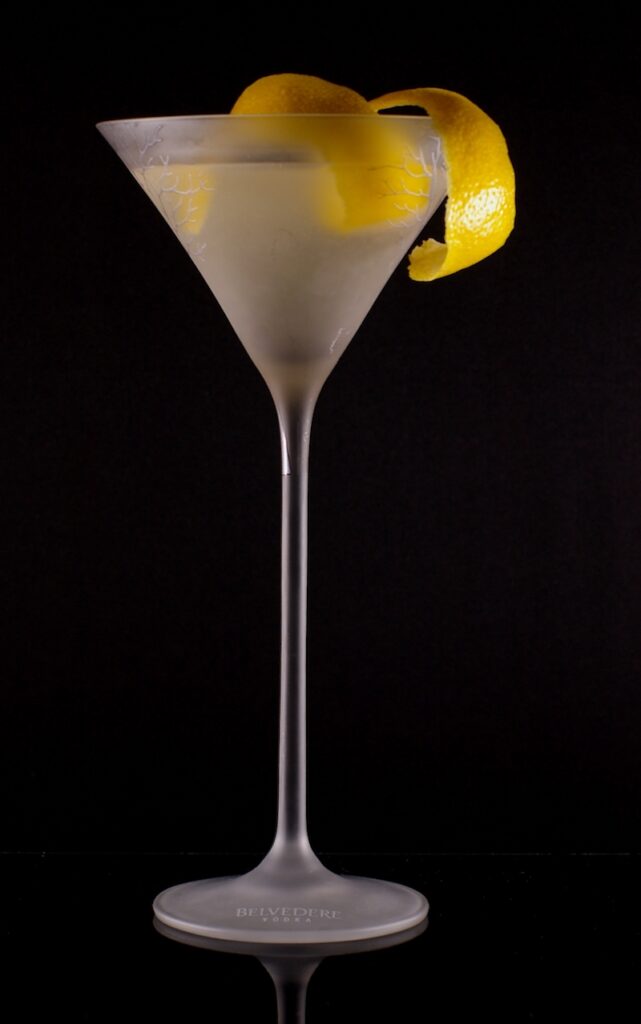James Bond—tough, worldly, and enigmatic. The legendary secret agent, often seen as just a silhouette, marked a significant milestone on August 12th. It’s been sixty years since the creator of the iconic 007 series, Ian Fleming, raised his final glass at the heavenly bar above. Despite the controversies surrounding Bond’s portrayal in modern times, his influence in the world of gastronomy remains undiminished, especially with the James Bond Cocktail that has become synonymous with his name: the Vesper, or as it’s more commonly known now, the Vodka Martini—shaken, not stirred. And let’s not forget Bond’s enduring connection to Italian Aperitivo Cocktails, which have become an integral part of his sophisticated image.
The Vesper: A Misunderstood Classic
The Vesper, one of the most renowned and quoted cocktails in history, first made its appearance in Ian Fleming’s Casino Royale, where James Bond orders it for the first—and for a long time, the last—time:
“Dry Martini. In a deep champagne goblet.”
“Oui, monsieur.”
“Just a moment. Three measures of Gordon’s, one of vodka, half a measure of Kina Lillet. Shake it very well until it’s ice-cold, then add a large thin slice of lemon peel, got it?”
“Certainly, monsieur.”
The bartender’s acknowledgment is often where most quotes end, but the conversation continues after Bond tastes the result: “Excellent. But if you can get a grain vodka instead of potato vodka, you’ll find it even better!” Originally, the vodka used was what we now call “potato vodka” by EU standards. Sean Connery’s portrayal with a bottle of Smirnoff in hand is a misunderstanding rooted in product placement, a common practice in film production. As for Kina Lillet, the Bordeaux aperitif wine, it was rebranded as Lillet Blanc, with its sugar content reduced in 1986. Fortunately, the quinine bark macerate from Peru remains unchanged. And Gordon’s gin? During Fleming’s time, it boasted an ABV of 47.3%, a concentration now available only in select markets.

The Shaken Debate: Myth or Method?
The method of preparation, particularly the “shaken, not stirred” technique, draws as much attention as the cocktail’s ingredients. Shaking martini-type drinks wasn’t as unusual in the past as it may seem today. Lowell Edmunds, an emeritus professor of classical literature at Rutgers University, cites a letter from Clarence Brigham, director of the American Antiquarian Society and an amateur cocktail historian, written in November 1948: “I distinctly remember that about forty years ago, martinis and manhattans were shaken.”
In the same year, American lawyer and cocktail expert David A. Embury published The Fine Art of Mixing Drinks. In this seminal work, he explained why shaking has given way to stirring: “The real difference between the two methods is simple. Shaking creates a colder cocktail more quickly than stirring. Since chilling is highly desirable for all cocktails, shaking is preferred. However, for some drinks, there’s another consideration: visual appeal. A crucial part of the charm of cocktails like martinis and manhattans is their clear, almost sparkling transparency. A stirred cocktail remains clear; a shaken one will be cloudy. Although this cloudiness disappears after a while, the drink will never have the crystal clarity of a stirred one.”
The Legacy of Bond’s Cocktail Culture
Beyond the Vesper, Bond’s cocktail menu is rich with options that reveal Fleming’s experience and suggest that James Bond was, in many ways, an extension of Ian Fleming himself. The first drink in Casino Royale is an Americano (Campari Bitter and sweet vermouth), and there are no shortages of rarities, like the Black Velvet (Guinness and champagne) or the Stinger (cognac and white crème de menthe).
However, nothing captures Fleming’s influence on Bond’s character like this passage from Moonraker: “M poured Bond three fingers of vodka from a frosted carafe. Bond took a pinch of black pepper and tossed it into the glass. The pepper slowly sank to the bottom, with only a few grains remaining on the surface. Bond downed the vodka in one quick gulp, leaving a peppery residue at the bottom. ‘The Russians taught me this,’ he said apologetically. ‘There’s always fusel oil on the surface of vodka—at least there was when it wasn’t distilled properly. In Russia, where vodka is made under all sorts of conditions, they sprinkle a bit of pepper into the glass, which absorbs the fusel oil and sinks to the bottom. I grew to like it, and it became a habit.'”
This trick and its explanation likely stem from Fleming’s first trip to the Soviet Union in April 1933 as a Reuters correspondent covering the trial of a group of British engineers. Thanks to this mission, he also enjoyed Beluga caviar, which was prohibitively expensive in Britain between the wars. Hence, Bond’s obsession with treating his companions to this exquisite complement to champagne.





